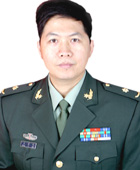参考文献:
[ 1 ] Eilertsen KE, et al. Tissue factor: (patho) physiology and cellular biology. Blood Coagul Fibrinolysis. 2004 Oct; 15 (7) : 521 - 38.
[ 2 ] Camerer E, et al. Cell biology of tissue factor, the p rincipal initiator of blood coagulation. ThrombRes. 1996, 81 (1) : 1 - 41.
[ 3 ] PerMorten Sandset et al. Dep letion of extrinsic pathway inhibitor ( EP I) sensitizes rabbits to disseminated intravascular coagulation induced with tissue factor: Evidence supporting a physiologic role forEP I as a natural anticoagulant. Proc NatlAcad SciU S A. 1991, 88 (3) : 708 - 12.
[ 4 ] ThomasA, Warr, et al. Disseminated Intravascular Coagulation in Rabbits Induced by Administration of Endotoxin or Tissue Factor: Effect of Anti - Tissue Factor Antibodies and Measurement of Plasma Extrinsic Pathway InhibitorActivity. Blood. 1990, 75 (7) : 1481 - 9.
[ 5 ] Hidesaku Asakura et al. Pathophysiology of disseminated intravascular coagulation (D IC) p rogressesat a different rate in tissue factor - induced and lipopolysaccharide - induced D IC models in rats.Blood Coagul Fibrinolysis. 2003, 14 (3) : 221 - 8.
[ 6 ] Hidesaku Asakura, et al. Marked difference in pathophysiology between tissue factor - and lipopolysaccharide - induced disseminated intravascular coagulation models in rats. Crit CareMed. 2002,30 (1) : 161 - 4.
[ 7 ] Hidesaku Asakura, et al. Role of fibrinolysis in tissue - factor - induced disseminated intravascular coagulation in rats - an effect of tranexamic acid. Haematologica. 2004, 89 (6) : 757 - 8.
[ 8 ] Hidesaku Asakura, et al. Study of the balance between coagulation and fibrinolysis in disseminated intravascular coagulation usingmolecularmarkers. Blood Coagul Fibrinolysis. 1994, 5 (5) : 829 - 32.
[ 9 ] Robin A, Pixley, et al. The contact system contributes to hypotension but not disseminated intravascular coagulation in lethal bacteremia. In vivo use of a monoclonal anti - factor XII antibody to block contact activation in baboons. J Clin Invest. 1993, 91 (1) : 61 - 8.
[ 10 ] Taylor, et al. Lethal E. coli sep tic shock is p revented by blocking tissue factorwith monoclonal antibody. Circ Shock. 1991, 33 (3) : 127 - 34.
[ 11 ] Biemond B. J. et al. Comp lete inhibition of endotoxin - induced coagulation activation in chimpanzeeswith a monoclonal Fab fragment against factor V II/V IIa. Thromb Haemost. 1995, 73 ( 2) :
223 - 30.
[ 12 ] A. A. Creasey, et al. Tissue factor pathway inhibitor reducesmortality from Escherichia coli sep ticshock. J Clin Invest. 1993, 91 (6) : 2850 - 60.
[ 13 ] LeviM . Current understanding of disseminated intravascular coagulation. Br J Haematol. 2004,
124 (5) : 567 - 76.
[ 14 ] LeviM. Sep sis and disseminated intravascular coagulation. J Thromb Thrombolysis. 2003, 16 (1
- 2) : 43 - 7.
[ 15 ] Van der Poll, et al. Activation of coagulation after administration of tumor necrosis factor to normal subjects. N Engl J Med. 1990, 322 (23) : 1622 - 7.
[ 16 ] BevilacquaMP, et al. Interleukin ( IL - 1) induces biosynthesis and cell surface exp ression of p rocoagulant activity in human vascular endothelial cells. J Exp Med, 1984, 160: 618 - 623.
[ 17 ] Brozna JP. Cellular regulation of tissue factor. Blood Coagul Fibrinolysis. 1990, 1 (4 - 5) : 415- 26.
[ 18 ] van Hinsbergh VWM et al. Tumor necrosis factor increases the p roduction of p lasminogen activator inhibitor in human endothelial cells in vitro and in rats in vivo. Blood 1988, 72: 1467 - 1473.
[ 19 ] Gando S, et al. Participation of tissue factor and thrombin in posttraumatic systemic inflammatory syndrome. Crit CareMed. 1997, 25 (11) : 1820 - 6.
[ 20 ] Gando S, Disseminated intravascular coagulation in trauma patients. Semin Thromb Hemost. 2001,
27 (6) : 585 - 92.
[ 21 ] Sakata Y, et al. The specific activity of p lasminogen activator inhibitor - 1 in disseminated intravascular coagulation with acute p romyelocytic leukemia. Blood. 1991, 77 (9) : 1949 - 57.
[ 22 ] RufW, et al. An anti - tissue factormonoclonal antibodywhich inhibits TF. V IIa comp lex is a potent anticoagulant in p lasma. Thromb Haemost. 1991, 66 (5) : 529 - 33.
[ 23 ] Park CT, et al. Tissue factor pathway inhibitor blocks cellular effects of endotoxin by binding to endotoxin and interfering with transfer to CD14. Blood. 1997, 89 (12) : 4268 - 74.
[ 24 ] Abraham E. Tissue factor inhibition and clinical trial results of tissue factor pathway inhibitor in sepsis. Crit CareMed. 2000, 28 (9) : 31 - 3.
[ 25 ] Abraham E, et al. Efficacy and safety of tifacogin ( recombinant tissue factor pathway inhibitor) in severe sep sis: a randomized controlled trial. JAMA. 2003, 290 (2) : 238 - 47.
来源:中山大学研究生学刊 作者:谢军


























